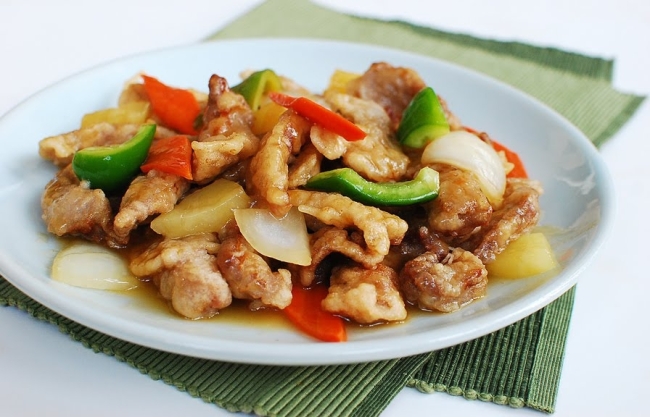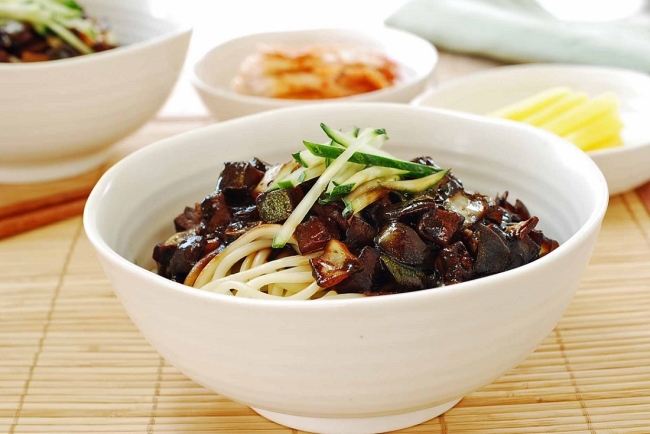 |
| Kimchijeon (Korean Bapsang) |
Ingredients:
● 1 cup thinly sliced kimchi (fully fermented)
● 2 scallions, roughly chopped
● 1/4 medium onion, thinly sliced
● 80 grams squid, cut into small strips
● 1 cup flour (or premade Korean pancake mix)
● 1/4 cup sweet rice powder (or use more pancake mix or flour)
● 1 tablespoon gochujang (Korean red chili pepper paste)
● 1/4 cup juice from kimchi
● 1 lightly beaten egg
● 1 cup ice-cold water (use more water if juice from kimchi is not available)
● Vegetable or canola oil for panfrying
Prepare all the ingredients before making the batter.
In a large bowl, mix the flour (or pancake mix) with the next five ingredients. Do not over-mix. Mix in all other ingredients.
Heat one tablespoon of oil in a nonstick pan over medium heat. Ladle the mixture into the pan, and spread it evenly into a thin round shape. Cook until the edges turn light golden brown, about 3 minutes. Reduce the heat to medium-low if the pancake browns too quickly. Turn it over, adding more oil, and press it down with a spatula. Cook until the other side is light golden brown, about 3 minutes.
Repeat the process until there is no remaining batter. Serve hot with a dipping sauce, if desired.





